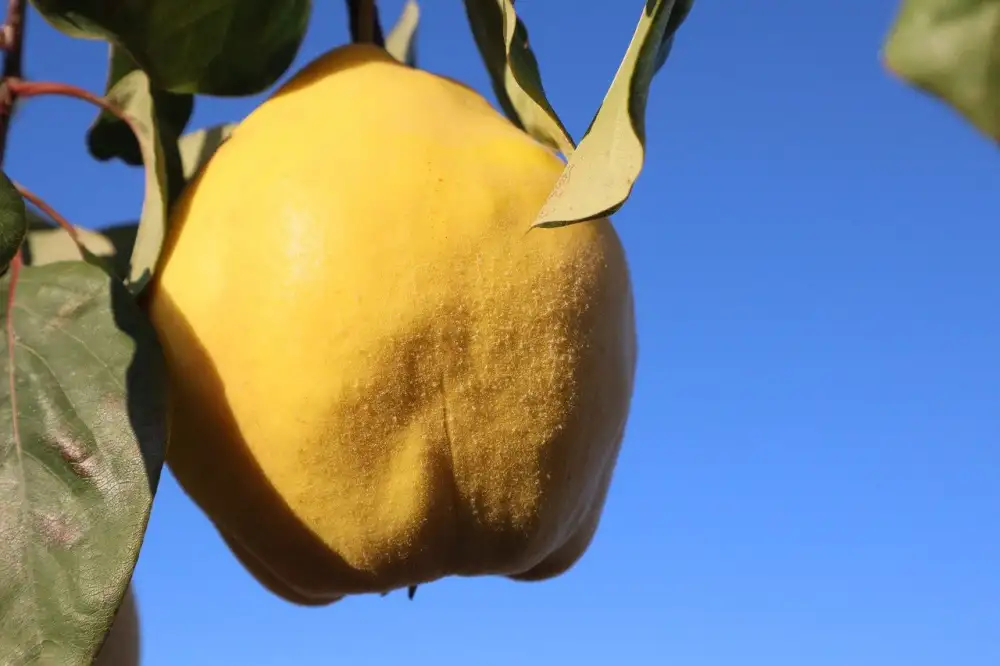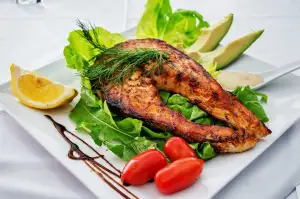Unveiling the Mystery: What's a Quince? Discover the Delightful Fruit Related to Apples and Pears

- Appearance and Characteristics of Quince
- Quince vs. Apples and Pears: Similarities and Differences
- Culinary Uses of Quince: From Jams to Desserts
- Health Benefits of Quince: A Nutritional Powerhouse
- Quince in Traditional and International Cuisine
- How to Select and Store Quince: Tips for Freshness
- Quince Recipes to Try: Inspiring Your Culinary Adventures
Quince, a unique and versatile fruit, is often overlooked in the culinary world. With its distinct flavor and aroma, quince offers a delightful twist to traditional dishes. This ancient fruit has been enjoyed for centuries, yet many are still unfamiliar with its wonders. Let's embark on a journey to uncover the mystery of quince and discover why it deserves a place in our kitchens. From its appearance to its culinary uses and health benefits, quince is truly a hidden gem waiting to be explored. So, let's dive in and embrace the delightful quince in our culinary adventures!
Appearance and Characteristics of Quince
Quince is a unique fruit that resembles a cross between an apple and a pear. It has a round shape with a slightly lumpy texture and can range in color from pale yellow to golden. The skin of the quince is tough and fuzzy, similar to that of a peach. When cut open, the flesh is firm and dense, with a creamy white color. The fruit has a strong fragrance, reminiscent of citrus and floral notes. Quinces are known for their high pectin content, which gives them their characteristic tartness and makes them ideal for cooking and preserving. Despite its unassuming appearance, the quince holds incredible culinary potential.
Quince vs. Apples and Pears: Similarities and Differences
Quince, apples, and pears may belong to the same family, but they each have their unique characteristics. Quince is known for its distinct shape and vibrant yellow color when ripe. Unlike apples and pears, quince has a tough and gritty flesh that is not pleasant to eat raw. However, when cooked, it transforms into a soft and fragrant delight with a sweet-tart flavor. While apples and pears are commonly enjoyed fresh, quince is primarily used in cooking due to its firm texture. So next time you're looking for a fruit that stands out from the crowd, give quince a try!
Culinary Uses of Quince: From Jams to Desserts
Quince is a versatile fruit that lends itself well to various culinary creations. Its high pectin content makes it perfect for making jams, jellies, and preserves. The natural tartness of quince pairs beautifully with sweet flavors, resulting in a delightful balance of tastes.
One popular use for quince is in the creation of membrillo, a thick paste made by cooking down quince with sugar. Membrillo is commonly enjoyed alongside cheese or spread on toast. Its sweet and tangy flavor adds a unique twist to any cheese platter.
Quince can also be used in desserts such as pies, tarts, and crumbles. When cooked, the fruit softens and develops a beautiful rosy color. Its aromatic flavor infuses into the dessert, creating a delightful treat that is both sweet and slightly tart.
In addition to its use in sweet dishes, quince can also be incorporated into savory recipes. It can be roasted alongside meats or added to stews and tagines to add a subtle sweetness and depth of flavor.
Whether you choose to make quince jam, indulge in a quince tart, or experiment with savory dishes, this versatile fruit is sure to elevate your culinary creations and leave your taste buds craving more.
Health Benefits of Quince: A Nutritional Powerhouse
Quince is not only a delicious fruit but also a nutritional powerhouse. Packed with vitamins, minerals, and antioxidants, it offers numerous health benefits. Quince is an excellent source of vitamin C, which boosts the immune system and promotes collagen production for healthy skin. It also contains dietary fiber that aids digestion and helps maintain a healthy weight. Quince is rich in potassium, which supports heart health and regulates blood pressure. Additionally, its antioxidant properties protect against chronic diseases and reduce inflammation in the body. Incorporating quince into your diet can provide a flavorful way to enhance your overall well-being.
Quince in Traditional and International Cuisine
Quince has been a staple in traditional and international cuisine for centuries. In Middle Eastern cuisine, quince is often used in savory dishes such as stews and tagines, adding a unique sweet and tart flavor. In Greek cuisine, quince is used to make spoon sweets, a type of preserve enjoyed with tea or served over yogurt. In Spanish cuisine, quince paste, known as membrillo, is paired with cheese for a delicious combination of flavors. Quince also plays a role in Persian cuisine, where it is used to make a fragrant and aromatic jam called moraba-ye beh. With its versatility and distinct taste, quince continues to captivate the palates of food enthusiasts around the world.
How to Select and Store Quince: Tips for Freshness
When selecting quince, look for fruits that are firm and have a golden-yellow color. Avoid any that are bruised or have blemishes. The fruit should also give off a sweet fragrance. To store quince, keep them in a cool, dark place with good ventilation. They can last for up to two weeks when stored properly. If you want to extend their shelf life, you can refrigerate them in a plastic bag for up to one month. Remember to check on them regularly and discard any that show signs of spoilage. By following these tips, you can ensure the freshness and quality of your quince for longer enjoyment in your culinary endeavors.
Quince Recipes to Try: Inspiring Your Culinary Adventures
Now that you have discovered the delightful quince, it's time to embark on a culinary adventure and explore the various ways this versatile fruit can be used in your kitchen. Here are a few quince recipes to inspire you:
1. Quince Jam: Capture the essence of quince by making a sweet and tangy jam. Simply cook peeled and diced quince with sugar, lemon juice, and water until soft and thickened. Spread it on toast or use it as a filling for pastries.
2. Quince Tart: Create a stunning dessert by baking thinly sliced quince atop a buttery pastry crust. Drizzle with honey and sprinkle with cinnamon for an extra touch of sweetness.
3. Quince Chutney: Add some excitement to your meals with a homemade quince chutney. Combine diced quince with onions, vinegar, brown sugar, ginger, and spices. Simmer until thickened and enjoy it as a condiment for cheese platters or roasted meats.
4. Quince Sorbet: Beat the heat with a refreshing quince sorbet. Puree cooked quince with sugar syrup and lemon juice, then freeze until firm. Serve in chilled bowls for a delightful dessert.
5. Quince Roasted Chicken: Elevate your roast chicken game by stuffing it with quartered quinces before roasting. The fruity flavors infuse into the meat, creating an irresistible combination.
These recipes are just the tip of the iceberg when it comes to cooking with quinces. Let your creativity run wild and experiment with incorporating this unique fruit into soups, stews, salads, and more!
In conclusion, the quince is a truly unique and versatile fruit that deserves a place in your kitchen. With its distinct flavor and aroma, it adds a delightful twist to both sweet and savory dishes. Whether you use it to make jams, desserts, or incorporate it into traditional or international cuisine, the quince is sure to impress your taste buds. Its nutritional powerhouse status only adds to its appeal. So why not embrace this delightful fruit and explore the endless culinary possibilities it offers? Get creative with quince recipes and let your kitchen be filled with the wonderful aroma of this hidden gem.
Published: 26. 11. 2023
Category: Food



